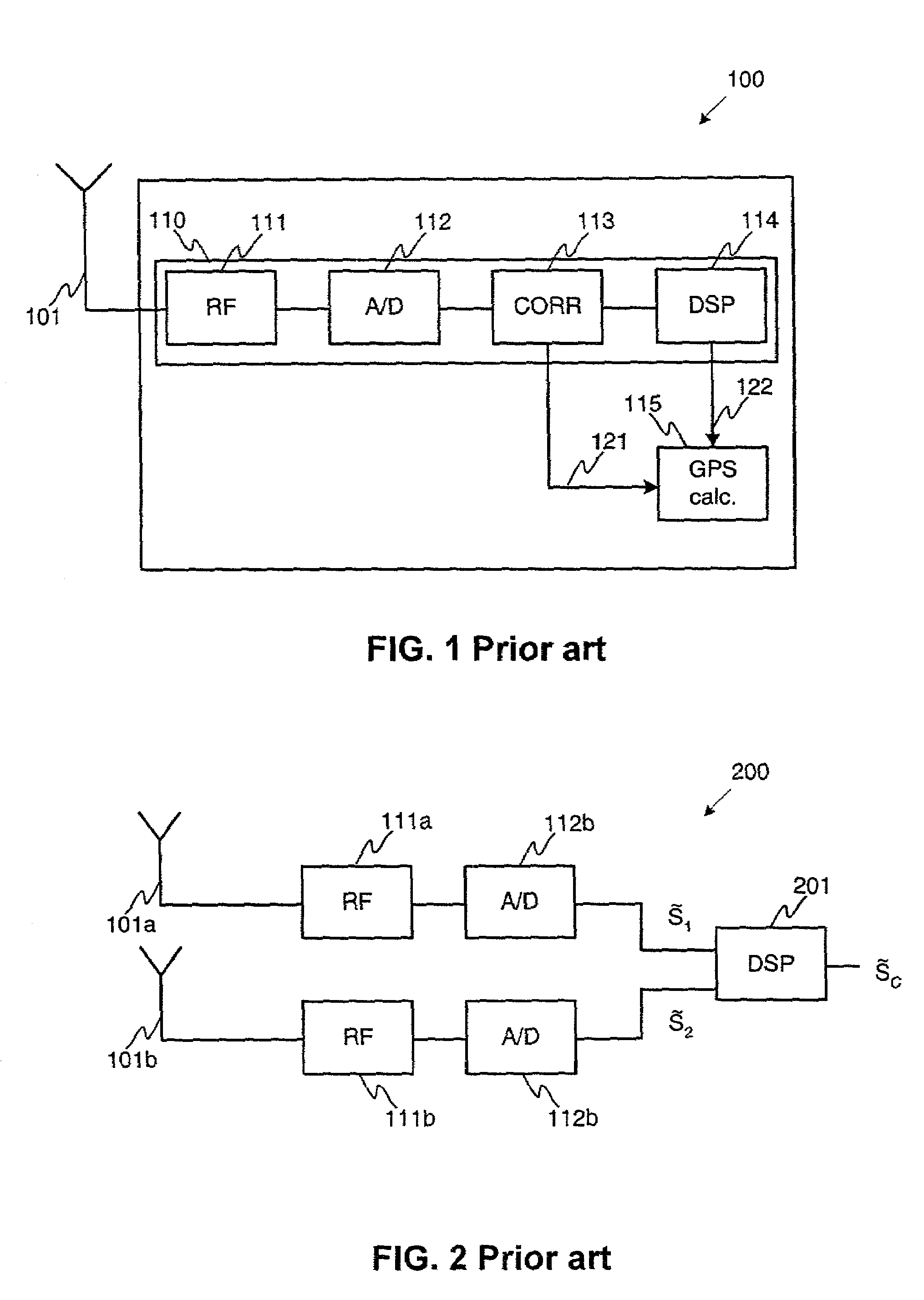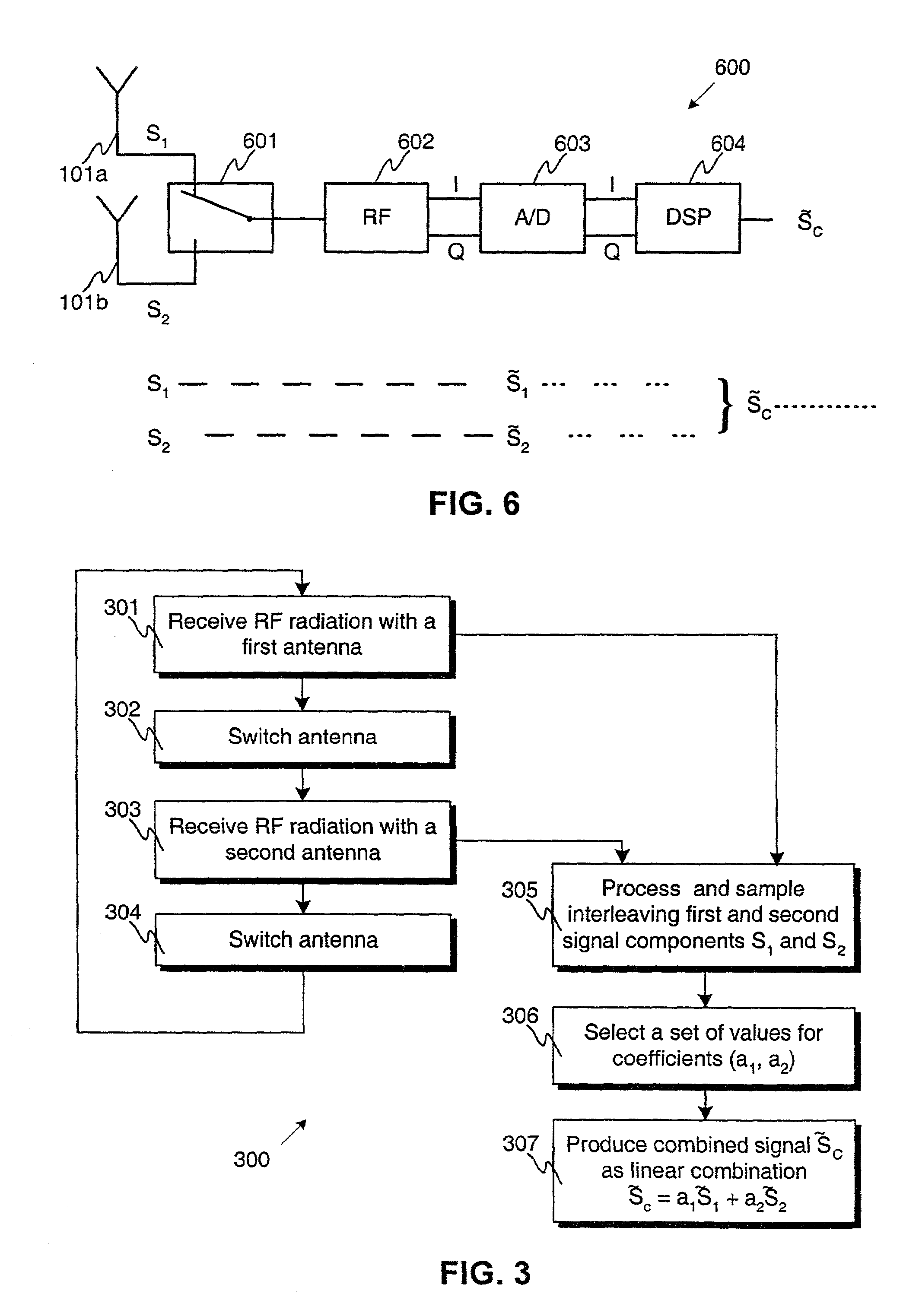Method for receiving radio frequency signal and a receiver device
a radio frequency signal and receiver technology, applied in the direction of polarisation/directional diversity, transmission monitoring, instruments, etc., can solve the problems of complex mechanical arrangement, inability of the antenna to detect electro-magnetic radiation, dynamic changes in the received radiation, etc., to improve the properties of the received signal, easy to produce, and adapt fast to the effect of receiving signal changes
- Summary
- Abstract
- Description
- Claims
- Application Information
AI Technical Summary
Benefits of technology
Problems solved by technology
Method used
Image
Examples
Embodiment Construction
[0044]FIGS. 1–2 are discussed in detail in the description of radio receivers according to prior art.
[0045]FIG. 3 illustrates a flowchart of a method 300 for receiving radio signal according to a first preferred embodiment of the invention. In step 301 radio frequency radiation is received using a first antenna. In step 302 the antenna using which radiation is received is switched to a second antenna, which has different properties than the first antenna. The polarization properties of the antennas or the location of the antennas, for example, may be different. In step 303 radio frequency radiation is received using the second antenna, and in step 304 the antennas are again switched. In a method according to the first preferred embodiment of the invention, the steps 301–304 can be carried out all the time. A first received signal component S1, which corresponds to the first antenna, and a second received signal component S2, which corresponds to the second antenna, are interleaved i...
PUM
 Login to View More
Login to View More Abstract
Description
Claims
Application Information
 Login to View More
Login to View More - R&D
- Intellectual Property
- Life Sciences
- Materials
- Tech Scout
- Unparalleled Data Quality
- Higher Quality Content
- 60% Fewer Hallucinations
Browse by: Latest US Patents, China's latest patents, Technical Efficacy Thesaurus, Application Domain, Technology Topic, Popular Technical Reports.
© 2025 PatSnap. All rights reserved.Legal|Privacy policy|Modern Slavery Act Transparency Statement|Sitemap|About US| Contact US: help@patsnap.com



